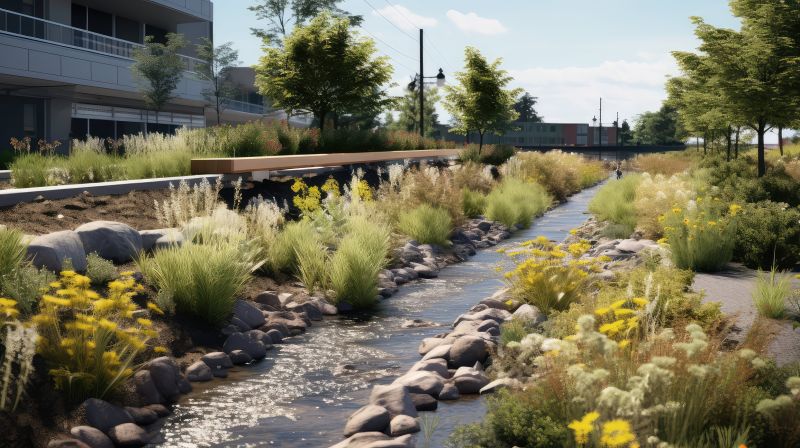Top-Rated Products For Drainage System Installations To Enhance Performance
Identify high-performance drainage solutions that improve water management and simplify installation processes.
 Installing an effective drainage system is essential for managing water flow around residential and commercial properties. Proper drainage helps prevent water accumulation, soil erosion, and potential structural damage. A comprehensive drainage setup typically involves a combination of various products designed to channel water away from foundations, walkways, and landscape features. Selecting the right components ensures a durable and efficient system that functions well under different weather conditions.
Installing an effective drainage system is essential for managing water flow around residential and commercial properties. Proper drainage helps prevent water accumulation, soil erosion, and potential structural damage. A comprehensive drainage setup typically involves a combination of various products designed to channel water away from foundations, walkways, and landscape features. Selecting the right components ensures a durable and efficient system that functions well under different weather conditions.
Top Overall Option
Modular Drainage Channel System
A modular drainage channel system provides flexible and customizable water management solutions suitable for various applications. Its design allows for easy installation, maintenance, and adaptability to different site conditions, making it a popular choice for both residential and commercial projects.
Types of Products For Drainage System Installations
Perforated Drainage Pipes
Flexible pipes with perforations to facilitate water flow and drainage around foundations and landscapes.
Solid Drainage Pipes
Non-perforated pipes used for directing water away from specific areas or for underground drainage systems.
Catch Basins
Grated units that collect surface water and direct it into underground drainage pipes.
Channel Drains
Linear drains designed to capture surface runoff along walkways, driveways, and patios.
Trench Drain Systems
Deep, wide channels that effectively manage large volumes of surface water in high-traffic areas.
Grates and Covers
Protective covers for drains that prevent debris entry while allowing water flow.
Filter Fabrics
Geotextile fabrics that prevent soil infiltration into drainage pipes, maintaining system efficiency.
Pervious Pavers
Permeable paving solutions that allow water to pass through and reduce runoff.
Slope Stabilization Products
Materials designed to prevent soil erosion and support proper drainage on slopes.
Adjustable Inlet Boxes
Customizable catch basin components that facilitate connection to various pipe sizes and configurations.
Flexible Pipe Connectors
Connectors that allow for easy joining of pipes with different diameters or materials.
Sump Pumps
Devices used to pump accumulated water from basements or low-lying areas to drainage outlets.
Drainage Manholes
Access points for inspection and maintenance of underground drainage systems.
Erosion Control Mats
Protective mats that stabilize soil and assist in proper drainage on disturbed slopes.
Popular Choices
Widely used for their versatility in managing subsurface water flow around foundations and gardens.
Commonly installed in driveways and yards to prevent surface water pooling.
Popular for capturing runoff along walkways and parking areas to maintain safety and cleanliness.
Effective in high-traffic or large-scale drainage applications for quick water removal.
Essential for protecting drainage openings while allowing efficient water flow.
Increasingly chosen for driveways and patios to reduce runoff and facilitate water infiltration.
Frequently used in basements to remove accumulated groundwater and prevent flooding.
Commonly applied to extend the lifespan of drainage systems by preventing soil infiltration.
Popular for customizing drainage system configurations and ensuring proper water flow.
Often used on slopes and disturbed soil areas to promote stabilization and proper drainage.
Drainage systems often incorporate a variety of elements such as pipes, fittings, and surface drainage solutions. These components work together to direct water flow, reduce pooling, and improve overall site safety. When planning a drainage installation, it's important to consider the specific site conditions, including soil type, slope, and water volume. This helps in choosing appropriate materials that will perform reliably over time.
The installation process involves careful planning and precise assembly of these products. Properly installed drainage systems can mitigate issues caused by heavy rainfall or rapid snowmelt. Maintenance of these systems is also crucial to ensure longevity, which includes regular inspection and cleaning of pipes, grates, and catch basins. Whether for new construction or retrofit projects, a well-designed drainage setup can significantly enhance property resilience and usability.
In addition to traditional piping solutions, there are innovative products designed to improve water management. These include modular trench drains, permeable pavers, and adjustable catch basins. Each product type offers specific benefits suited to different scenarios, making it important to understand their features and applications. Investing in quality drainage components can lead to more effective water control and help preserve the integrity of the landscape and structures.
Key Buying Considerations
- Assess the volume and velocity of water that needs to be managed to select appropriate product sizes and types.
- Consider the soil type and landscape features to determine the best drainage solutions and materials.
- Evaluate the installation environment, including surface load requirements and exposure to elements.
- Ensure compatibility between different components such as pipes, grates, and catch basins for seamless integration.
- Think about future maintenance needs and choose products that allow easy access and cleaning.
- Determine whether surface or subsurface drainage is required based on site conditions.
- Check for compliance with local building codes and regulations related to drainage systems.
- Invest in durable materials that can withstand environmental stresses over time.
- Consider the aesthetic aspects if the drainage system is visible, opting for designs that blend with the landscape.
- Plan for proper slope and grading to maximize drainage efficiency and prevent water pooling.
- Evaluate the ease of installation, especially if DIY installation is intended, and whether professional help is needed.
- Account for potential expansion or modifications to the system in future landscaping or construction projects.
- Review product warranties and manufacturer support to ensure reliability and assistance if needed.
- Prioritize products with proven performance in similar applications or environments.
- Balance initial costs with long-term durability and maintenance requirements for cost-effective solutions.
This content contains affiliate links. We may earn a commission if you purchase through these links, at no additional cost to you.
